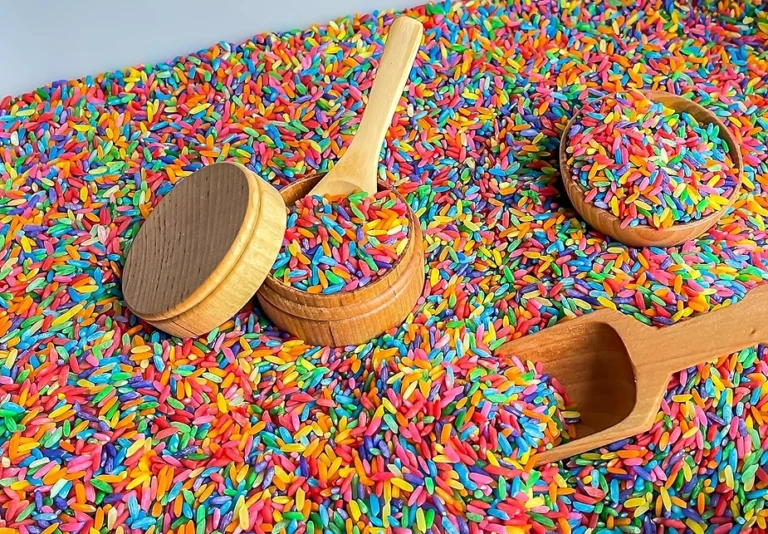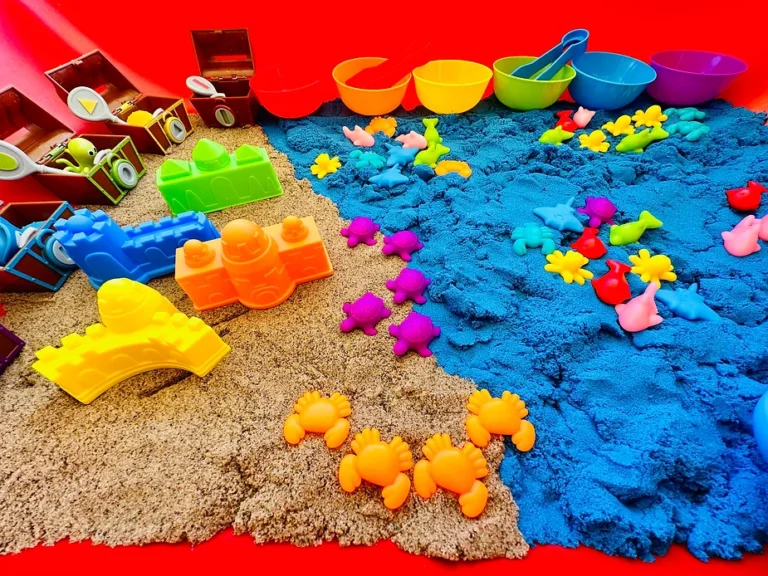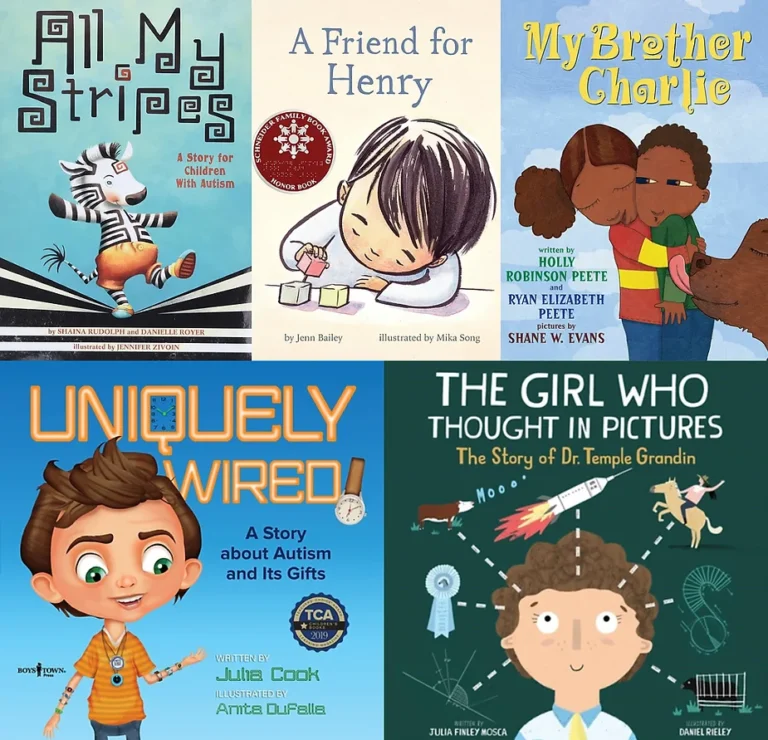25 Ways Life Looks Different Parenting an Autistic Child

This post may contain affiliate links and I could earn a small commission at no cost to you. However, I will never recommend anything that I do not believe in or use myself. You can read more about my disclosure policy here.
Parenting an autistic child has taught us valuable lessons about patience, empathy, and the beauty of neurodiversity. We’ve come to appreciate the world through their our child’s unique lens, recognizing that their differences make them extraordinary.
While there are certainly moments of frustration and exhaustion, there are also moments of profound joy and pride.
Daily life in our household may look a bit different. We have learned to adapt our routines and create a structured environment that provides a sense of security and predictability.
We have come to realize that the differences in our daily life make us stronger, more compassionate individuals, and we are grateful for the opportunity to learn and grow alongside our autistic child.
Today I’m here to share 25 ways life looks different parenting an autistic child, along with some helpful tips for navigating those more challenging moments.
25 Ways Life Looks Different Parenting an Autistic Child
1. Eloping Or Wandering Away In Public
One of the most distressing challenges we face parenting an autistic child is my child’s tendency to elope or wander away when out in public.
He not only wanders away, but struggles with understanding dangerous situations or has difficulties with impulse control, making it crucial to implement strategies to ensure his safety.
Teaching and practicing strategies for staying nearby, such as holding hands, can help prevent elopement and provide peace of mind when venturing outside the comfort of our home. It requires constant vigilance and proactive measures to ensure their well-being.
Related: Elopement And Autism: How To Handle Your Child Eloping

2. Alarms And Extra Locks On Doors
At home, my child has a tendency to wander outside without our knowledge or awareness of potential dangers. His curiosity and lack of understanding about safety measures have made it necessary for us to implement additional precautions.
We have installed alarms on doors and added extra locks that he can’t reach to prevent him from wondering outside without our knowledge and ensure his safety.
These measures provide us with peace of mind knowing that we can effectively monitor their movements and prevent any potential accidents. By taking these precautions, we create a secure environment that allows our child to explore within the confines of our home while minimizing potential risks.
3. Stimming
Short for self-stimulatory behavior, or stimming, is a common occurrence with our child, and among young autistic children and toddlers. It is a natural and instinctive way for him to regulate sensory input, express emotions, and find comfort in his surroundings.
His stimming behaviors can manifest in various forms, such as hand-flapping, rocking, spinning, or repeating certain sounds or words.
Understanding and accepting stimming as a healthy coping mechanism has allowed me to support my child’s self-regulation and provide them with a safe space where they can freely express themselves without judgment or restriction.

4. Clothing Is Sometimes Optional
Sensory Processing Disorder or sensory sensitivities may make certain fabrics, textures, or tags uncomfortable or even painful. Parenting an autistic child, I’ve learned to prioritize my child’s comfort and well-being over societal expectations.
This means allowing my child to have autonomy in choosing their clothing, whether that means wearing looser or softer garments, selecting clothing without tags, or even opting for minimal clothing when appropriate.
By embracing the concept that clothing can be optional, I provide my child with the freedom to navigate their sensory needs and express themselves authentically.
5. Everything Gets Pulled Off The Shelves
My child has a tendency to pull everything off the shelves. Their curiosity and sensory-seeking behaviors can lead to a desire to explore and interact with objects around them.
As a result, babyproofing measures become essential. We have also introduced alternative outlets for their need to explore, such as sensory bins or designated play areas, to redirect their attention and encourage positive engagement.
Related: Ultimate Toy Guide: 30 Best Sensory Toys for Autistic Children

6. We Don’t Say “No”
My child frequently struggles with hearing and accepting the word “No.” They may become fixated on a specific desire or routine and have difficulty understanding or respecting boundaries.
To address this challenge, we have found alternative wording and redirection to be effective strategies. Instead of simply saying “No,” we provide clear explanations or offer alternative choices.
For example, instead of saying “No, you can’t have that toy,” we might say, “That toy is not available right now, but we can play with another toy together.”
This approach helps to redirect their attention and provide alternative options, reducing frustration and promoting cooperation. By using gentle and positive language, we can navigate these situations with greater ease and foster a more harmonious environment for both our child and our family.
7. Babyproof Everything
Curiosity and sensory-seeking behaviors have led my child to explore their surroundings with great enthusiasm.
As a result, extensive babyproofing measures have become essential, securing furniture to the walls, locking kitchen cabinets, securing shelves with childproof locks, organizing items in bins or containers, not placing fragile or dangerous items within reach, and minimizing potential hazards to maintain a safe environment.

8. No Fragile Home Décor
Fragile home decorations have become impractical in our household. The unpredictable nature of my child’s sensory-seeking behaviors means prioritizing practicality and durability over delicate decor choices.
9. Jumping On Furniture
My child’s need for sensory input sometimes translates into jumping on furniture, like couches or beds. We have learned he seeks the deep pressure and proprioceptive input that jumping provides, which helps regulate his sensory system.
I’ve learned to find alternative ways to meet his sensory needs through sensory play. Providing him with designated areas or equipment, such as a sensory trampoline or crash pad, allows him to safely engage in jumping activities.
By understanding and acknowledging their need for sensory input, we can work together to find appropriate outlets for his energy while ensuring his safety.
Related: Why Sensory Play Is Important For Child Development

10. Meltdowns
Autistic meltdowns are a reality that we encounter frequently. When overwhelmed by sensory input, changes in routine, or difficulty expressing their needs, his emotions can escalate rapidly, leading to meltdowns. These episodes can involve intense crying, screaming, self-stimulatory behaviors, and an overall sense of distress.
As a parent, it is crucial for me to remain calm, patient, and understanding during these moments. By creating a safe and supportive environment, providing sensory tools or comfort items, creating a calm down corner, and offering reassurance, I can help my child regulate his emotions and gradually calm down.
Understanding the triggers and patterns that lead to meltdowns allows me to implement proactive strategies and support my child’s emotional well-being.
Related: How to Create a Calm Down Corner for Autism
11. Transitions Are Hard
My child often struggles with transitions or changes in routines. He relies on predictability and familiarity to navigate the world, and unexpected alterations to their daily routine can cause significant stress and anxiety.
Parenting an autistic child, we have learned the importance of providing clear communication to prepare him for upcoming transitions. We often use visual schedules, use timers, and offer ample warning to help him navigate these changes with more ease.
Additionally, to manage transitions for my autistic child, we try maintaining a consistent and structured routine as much as possible, to give him a sense of security and stability.
Related: How to Help an Autistic Child with Transitions Between Activities

12. Outings End In Meltdowns
Navigating public spaces can be overwhelming for my child due to sensory overload, unfamiliar environments, and social demands. Outings can quickly turn into stressful experiences, resulting in autistic meltdowns.
We plan outings carefully, preparing him with visual supports and social stories, and gradually exposing him to new environments has helped alleviate anxiety and reduce the likelihood of meltdowns.
Related: How to Calm Autistic Meltdowns: 7 Tips that Work
13. Loud Noises Are A Challenge
My child often struggles with loud noises when we’re out in public. Busy environments, crowded places, or unexpected loud noises can trigger anxiety and distress.
As parents, we have become proactive in addressing these difficulties. I strive to anticipate potential triggers and provide warnings ahead of time, allowing my child to mentally prepare and cover their ears if necessary.
We also use noise-canceling headphones or Loop earplugs for kids to offer them a sense of comfort and reduce sensory overload.

14. Potty Training Takes Awhile
Potty training an autistic child has been a milestone that required immense perseverance. Unlike my other two children, who were potty trained before 3 years old, my son faced communication difficulties and resistance to change, which prolonged the process.
Throughout this journey, we embraced a patient and consistent approach, incorporating visual aids and positive reinforcement, to gradually teach him toileting skills. Celebrating every small step forward played a vital role in maintaining his motivation and ensuring progress.
Related: Potty Training an Autistic Child: 11 Best Potty Training Tips for Success
15. Mealtimes Aren’t Always At The Table
One of the hurdles we encounter is adapting to non-traditional mealtimes. Sitting at the table can be overwhelming for my child due to sensory processing disorder or sensory sensitivities, or a need for movement.
To ensure proper nutrition, we have learned to embrace flexibility, allowing meals to happen in comfortable spaces that suit my child’s needs.

16. We Eat the Same Meals
The need for routine and familiarity is a significant aspect of comfort and security, which means eating the same meals every day of the week. My child finds solace in the predictability of their meals. Introducing new foods or varying the menu can be overwhelming and trigger sensory sensitivities.
Parenting an autistic child, I’ve learned to embrace this aspect of his eating habits, ensuring they receive a balanced diet while incorporating small variations or subtle changes to promote exposure to new flavors and textures over time.
17. Picky Eating
Navigating picky eating habits has been a continuous journey. Sensory processing disorder or sensory sensitivities often limit my child’s food choices and willingness to try new things.
We have learned to be patient and understanding while also introducing a variety of foods in a gentle and gradual manner.
It’s important to respect his individual preferences as much as possible. We always offer him foods he is comfortable with during a meal, while exposing him to new options that he is not required to eat.
Finding creative ways to incorporate nutritious ingredients into their preferred meals has been key in ensuring they receive a balanced diet.

18. Requests For Specific Cups, Plates, And Utensils
My child often requests specific cups, plates, utensils, or other tableware. He has a strong preference for certain colors, shapes, or textures that provide him with a sense of familiarity and comfort during mealtimes.
By allowing him to have control over his choice of utensils and dishes, we create a sense of empowerment and reduce the likelihood of mealtime challenges or aversions.
Understanding and accommodating their preferences in this area has made a significant difference in their enjoyment and engagement during meals, fostering a positive and peaceful dining atmosphere for our family.
19. Love for Numbers And Letters
My child’s intense fixation on numbers and letters has been a double-edged sword. While it showcases his unique strengths, it can sometimes hinder their engagement in other developmental areas.
Encouraging a balance between his interests and diverse experiences has been essential for his growth and development.

20. Toys And Play Look Different
I have discovered that toys are approached differently and may not conform to popular or age-appropriate norms. My child’s play style is distinct and often revolves around his individual interests and sensory preferences.
He typically finds joy in lining up objects, repetitive actions, or focus on specific features of a toy, such as watching a wheels of a car spin. I have learned to embrace his unique play style. I provide a variety of sensory toys that cater to his sensory needs and interests.
Related: 30 Best Toys For Autistic Children (Ages 3-5)
21. Same Show Over And Over
Repetitive behaviors, like watching the same show or movie repeatedly, offer my child a sense of comfort and familiarity.
I love observing my child’s enthusiasm as he eagerly presses play, reciting lines along with the characters and immersing himself in the storyline. I’ve learned that repetition is not just a repetitive act for them, but a source of joy and stability.
It’s a reminder to embrace his individuality and find beauty in the little things that bring him happiness.

22. Social Interactions Require Support
My child faces unique challenges when it comes to social interactions, often preferring solitary activities over group play. He often struggles with grasping social norms, making consistent eye contact, or taking turns during conversations or games.
Parenting an autistic child, I understand the importance of supporting their social development. I provide opportunities for structured and supportive social interactions, such as arranging autism friendly playdates with familiar peers, encouraging friendship with siblings, and enrolling them in group activities.
Related: How to Plan an Awesome Autism Friendly Playdate
Related: How to Nurture Friendship with an Autistic Sibling
23. Brushing Teeth, Combing Hair, And Getting Dressed Can Be A Battle
Simple daily tasks like brushing teeth, combing hair, and getting dressed often become battlegrounds. Sensory processing disorder or sensory sensitivities, and a need for routine make these activities challenging.
Patience, gentle guidance, and incorporating sensory accommodations have helped transform these battles into moments of growth and progress.
As my child grows older, we have noticed a significant improvement with these activities.

24. There Is No Going To Bed Early
Sleep disruptions are a common occurrence in our household. Sensory regulation difficulties and anxiety often make it challenging for my child to settle down at night.
Establishing calming bedtime routines, and incorporating sensory accommodations have been vital in creating a peaceful sleep environment.
25. Haircuts Are Hard
Haircuts can be particularly challenging for my child due to sensory sensitivities and difficulty with unfamiliar situations.
Finding a patient and understanding hairstylist, utilizing visual supports, and gradually introducing the haircutting process have been crucial in making it a more manageable experience.

Final Thoughts
Parenting an autistic child is a journey filled with unexpected twists and turns. Each day brings its own set of challenges, but with patience, understanding, and unwavering love, we navigate through them together.
By sharing my experiences, I hope to foster a more inclusive society for all families on similar journeys.
Recommended
- How to Connect with Your Autistic Child
- Positive Affirmations For Autistic Children You Need To Know
- Building Strong Self-Esteem in Autistic Children: A Parent’s Guide
- What are the 5 Neurodivergent Love Languages?
- Mourning and Healing After a Child is Diagnosed with Autism






